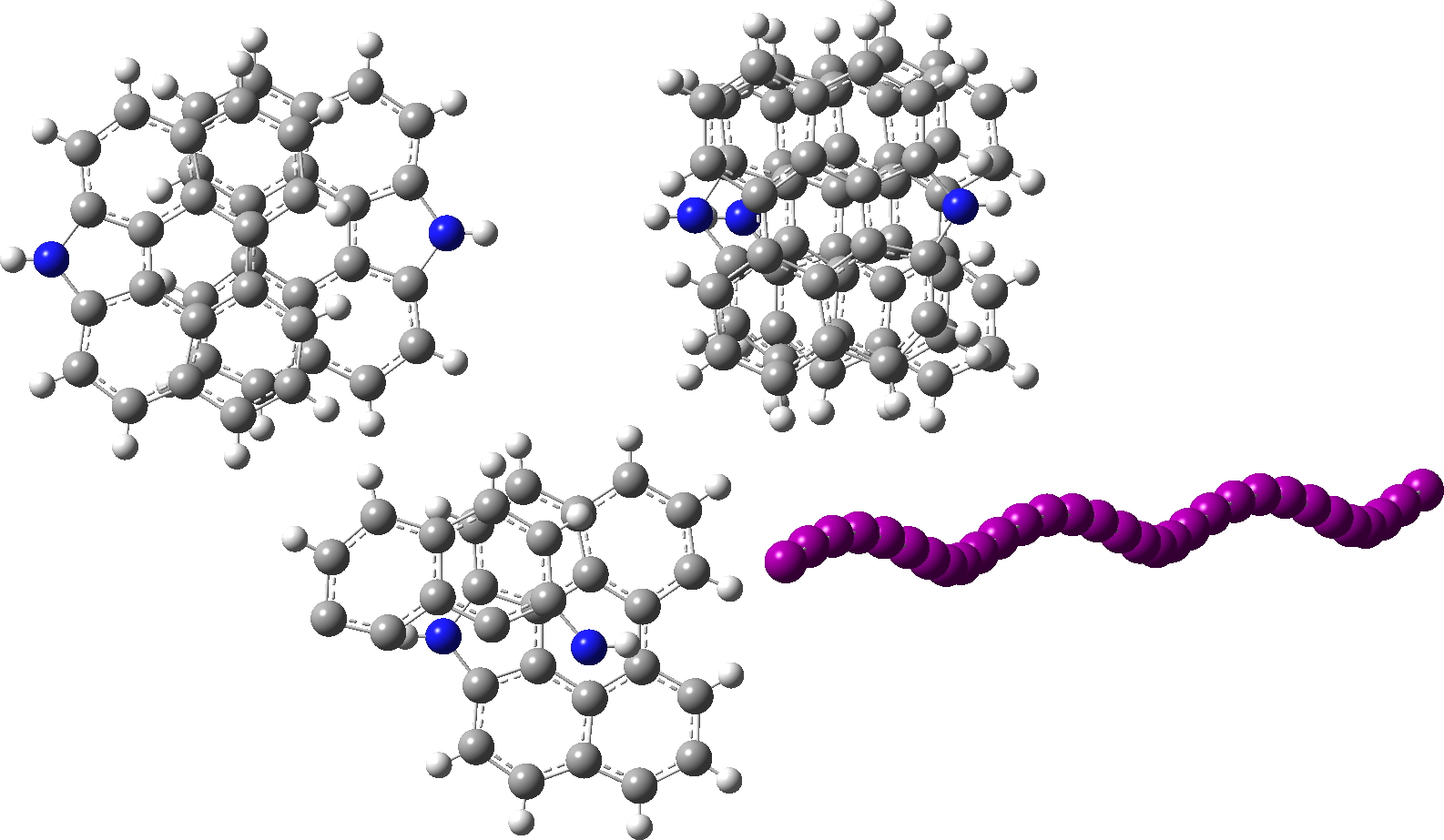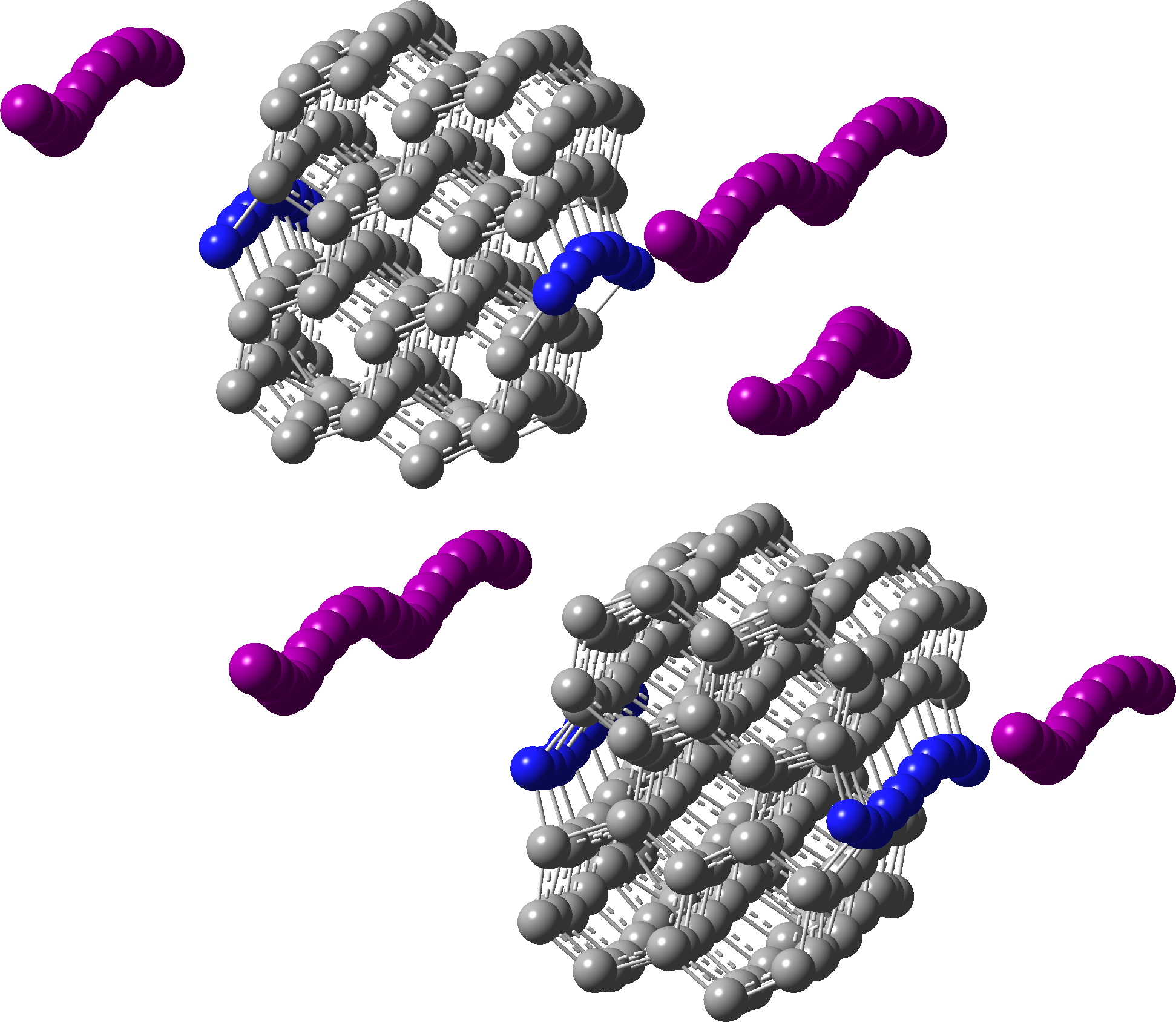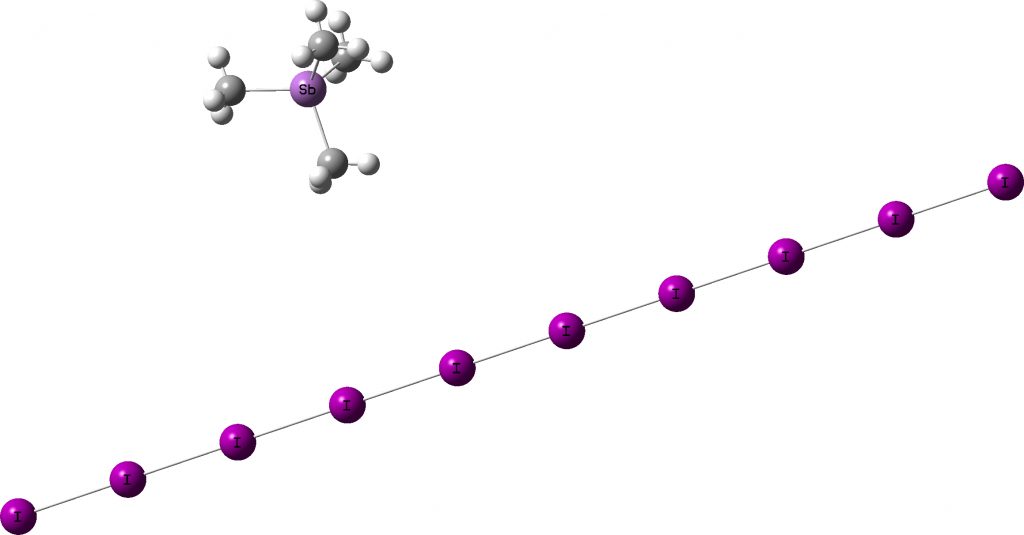The previous post described the fascinating 170-year history of a crystalline compound known as Herapathite and its connection to the mechanism of the Finkelstein reaction via the complex of Na+I2– (or Na22+I42-). Both compounds exhibit (approximately) linear chains of iodine atoms in their crystal structures, a connection which was discovered serendipitously. Here I pursue a rather more systematic way of tracking down similar compounds.
Here is one search query which can be used in the CSD database of crystal structures. A chain of eight iodine atoms is defined, and the six angles subtended at iodine restricted to the range 150-180° (i.e. linear). The inner six iodines are also defined as having only two bonded atoms.‡
This results in four hits (October 2021), three of which are shown below (the fourth, JOPLEH, contains chains of I82- anions which do not appear to be infinitely repeating).
- IQIVIP, containing the heterocyclic unit pyrroloperylene and connected chains of I29.[1] See also DOI: 10.5517/ccdc.csd.cc1m1tj0

Click to load 3D model of IQIVIP
The truly remarkable feature is that the iodine chain appears to adopt a gentle right-handed helix in this isomer. One has to wonder how this might respond to light! - IQIVOV, closely related to IQIVIP, this time containing connected chains of gently spiralling I10 groups.[1] See also DOI: 10.5517/ccdc.csd.cc1m1tk1

Click to load 3D model of IQIVOV
- WEVFAE, containing a tetramethyl stilbonium cation (an analogue of a tetramethylammonium cation) and this time infinite chains of I83- anions.[2]

Click to load 3D model of WEVFAE
The list is not long, but contains some fascinating examples of how iodine can catenate into infinitely long chains, sometimes linear (on the time averaged scale at the temperature of the data recording), sometimes gently helical and as with Herapathite, a rather more undulating motif. Again how the crystals of these compounds respond to light remains to be established. However it may be that since these three molecules are reported variously as being black-green, black and golden, some may be opaque to light in any orientation. I also note that linear chains of Ag, Ga In and Tl have also been reported in inorganic metal nitrides.[3]
‡ The same result is obtained if the specification of iodine in this search is replaced by “any” element. This post has DOI: 10.14469/hpc/9540. See also DOI: 10.1016/j.hm.2005.11.005 for a connection between coiled chains of iodine atoms and Einstein’s theory of teleparallel spacetime, invoking torsional geometries.
References
- S. Madhu, H.A. Evans, V.V.T. Doan‐Nguyen, J.G. Labram, G. Wu, M.L. Chabinyc, R. Seshadri, and F. Wudl, "Infinite Polyiodide Chains in the Pyrroloperylene–Iodine Complex: Insights into the Starch–Iodine and Perylene–Iodine Complexes", Angewandte Chemie International Edition, vol. 55, pp. 8032-8035, 2016. http://dx.doi.org/10.1002/anie.201601585
- U. Behrens, H.J. Breunig, M. Denker, and K.H. Ebert, "Iodine Chains in (Me4Sb)3I8 and Discrete Triiodide Ions in Me4AsI3", Angewandte Chemie International Edition in English, vol. 33, pp. 987-989, 1994. http://dx.doi.org/10.1002/anie.199409871
- P. Höhn, G. Auffermann, R. Ramlau, H. Rosner, W. Schnelle, and R. Kniep, "(Ca7N4)[Mx] (M=Ag, Ga, In, Tl): Linear Metal Chains as Guests in a Subnitride Host", Angewandte Chemie International Edition, vol. 45, pp. 6681-6685, 2006. http://dx.doi.org/10.1002/anie.200601726

If visible light won’t get through, how about near infrared?